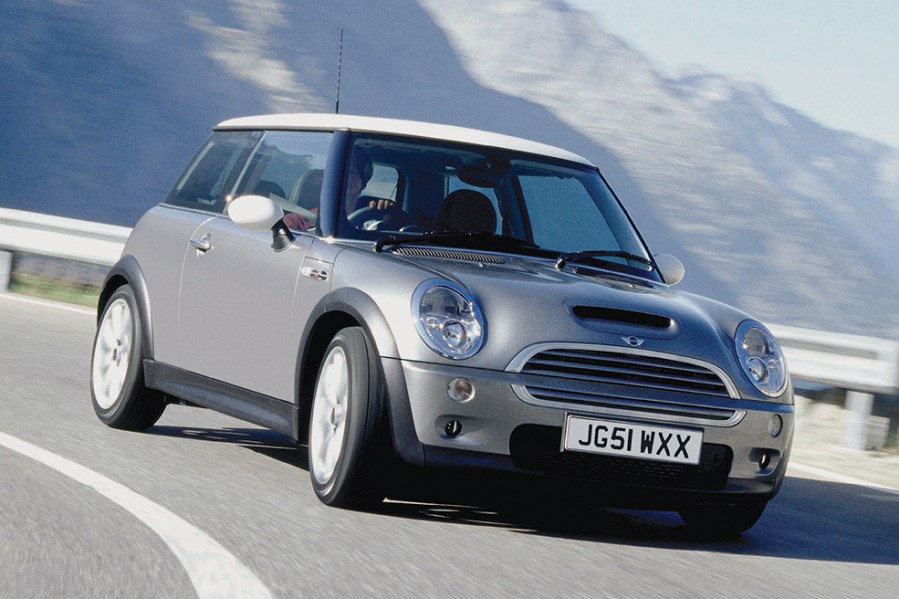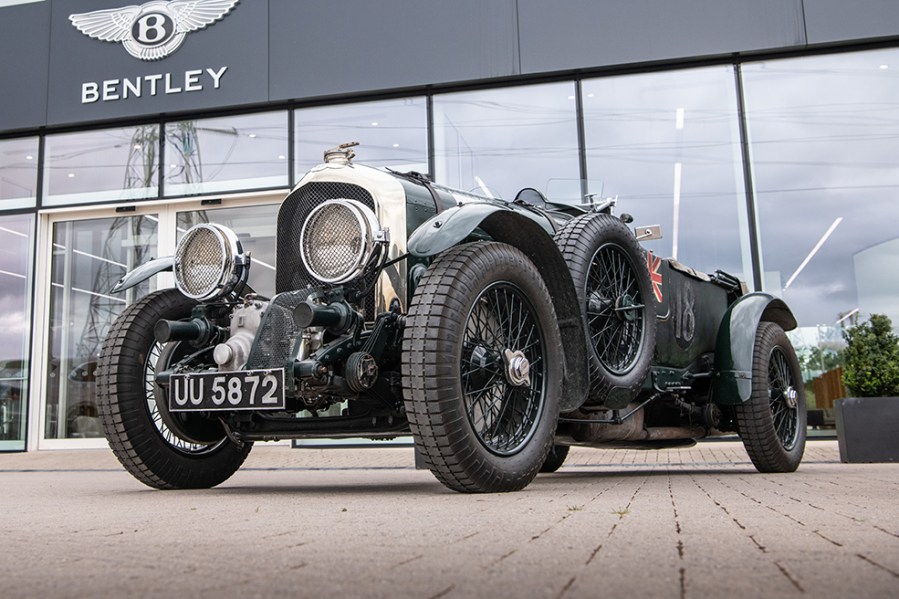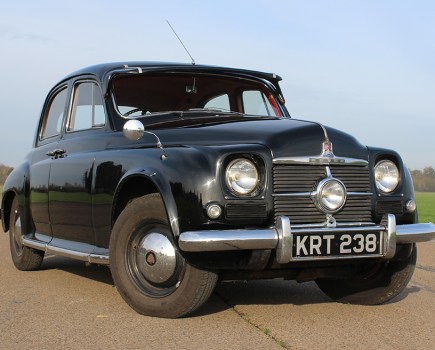Turbocharging may be more popular today but supercharging has been around longer. Here are our favourite supercharged classics
The common approach for increasing performance and power from a car used to be fitting a larger engine, but where that would be undesirable – either due to tax, emissions, fuel consumption or weight reasons – forced induction has offered solution. The turbocharger rose to popularity during the 1980s for its efficiency, using waste exhaust gasses to spin an impellor, compress air and force it back into the engine to combine with more fuel for extra power. However, that means waiting for the engine to breathe out to drive the turbo in the first place, creating lag. If you want the instant acceleration granted by a bigger engine without adding cubic centimetres, the supercharger is the answer; belt-driven by a pulley located on the end of the engine, it can spin up immediately and provide an instant rush of additional air into the engine.
Their whining noises and less potential for big power gains than turbochargers mean the general public aren’t huge supercharger fans and today, it’s only the hottest variants of American muscle cars that use them. But throughout the years, superchargers have added power, torque and an exciting soundtrack to some truly iconic classics – here are our favourites.
Bentley 4.5 Litre ‘Blower’
It’s common to associate Rolls-Royce with superchargers, given the widespread use of its aero engines utilising forced induction, but it was Bentley that applied the technology to a car first. The Bentley 4 ½ Litre was produced as an engine and rolling chassis to replace the 3 Litre, with the platform used by numerous coachbuilders to pair with their bespoke bodywork. During the late 1920s, other prestigious manufacturers such as Bugatti were producing cars designed to compete at Le Mans, adding a sporting image to their road cars. Racing driver Tim Birkin saw potential in the solidly constructed, durable Bentley platform and, noting Mercedes’ success with superchargers at Le Mans, opted to follow suit. Birkin produced four racing 4 ½ Litres equipped with Roots-type superchargers, located externally of the main bodywork for packaging and cooling reasons.
The results were remarkable – in road-going trim, the supercharger took power from 110hp to 175hp, whereas the racing version of the straight-four climbed from 130hp to 240hp. The large supercharger on display on the nose and distinctive whining to accompany the gruff engine rumble under acceleration earned the supercharged car the nickname ‘Blower’, although W.O. Bentley himself did not approve of Birkin’s creation at first. Bentley’s background as an engineer lead to his belief that ‘bigger is better’ when chasing power, and believed that the supercharger not only corrupted the otherwise excellent engine, but went against his ethos that an engine should be durable first, refined second and powerful third.
Some of Bentley’s cynicisms proved justified in practise – two Blowers entered the 1930 24 Hours of Le Mans, but did not complete the race. However, Birkin finished second in the 1930 French Grand Prix behind a Bugatti Type 35, leading to Ettore Bugatti calling the 4½ Litre the “fastest lorry in the world.” The supercharged brute was undeniably fast – Mildred Bruce set a 24-hour distance record at Montlhéry in one, achieving an average speed of 89.4mph. In 1932, Tim Birkin clocked 137.96mph in his red Blower at Brooklands, and recent dyno testing of car number two – owned by Bentley Motors – has found that the racing-spec version is still capable of in excess of 125mph. Consider the substantial kerb weight of 1727kg, and the plethora of racing successes and speed records it achieved thanks to the addition of the supercharger, and it’s small wonder the Bentley Blower is a legend.
Lancia Beta Volumex
Lancia is a company well known for going against the grain, and its use of superchargers is a fine example of that. Challenging turbocharged rivals in the World Rally Championship, it would have been logical for the Stratos’ successor to use a turbo too, but the technology was still largely alien to the Fiat group, and Lancia’s engineers preferred the instantaneous response of a supercharged engine, so work began developing forced induction for their cars with greater volumetric efficiency, hence the eventual name of Volumex.
The supercharger was first seen on the Trevi saloon, although that never made it to Britain in Volumex trim. We did, however, get the Beta and HPE Volumex, both boasting a Roots-style supercharger that took power from the 2.0-litre engine from 108bhp to 135bhp, as well as substantially boosting torque to 148 lb.ft. The lovely twin-cam rasp was now accompanied by a subtle whining at idle and a less subtle induction roar under acceleration, with 60mph now arriving in 8.5 seconds on the way to an impressive 124mph top speed.
Visually, the Beta and HPE Volumex can be distinguished by the offset bonnet bulge required to clear the new air intake, a spoiler fitted below the front bumper and the rubber rear spoiler, as well as some subtle Volumex and ‘VX’ badging. They also have stiffer spring rates to cope with the extra power, but the overall effect was arguably better touring ability, rather than sports car-baiting performance. Thanks to the infamous Lancia issues of unreliability and chronic rust, just 1272 Betas and 2370 examples of the HPE Volumex were produced, with only 186 right-hand drive HPEs and around 150 RHD Betas imported to Britain. Supposedly just four Beta VXs and a single HPE VX survive in the UK today, making these already fascinating classics even more appealing in our eyes.
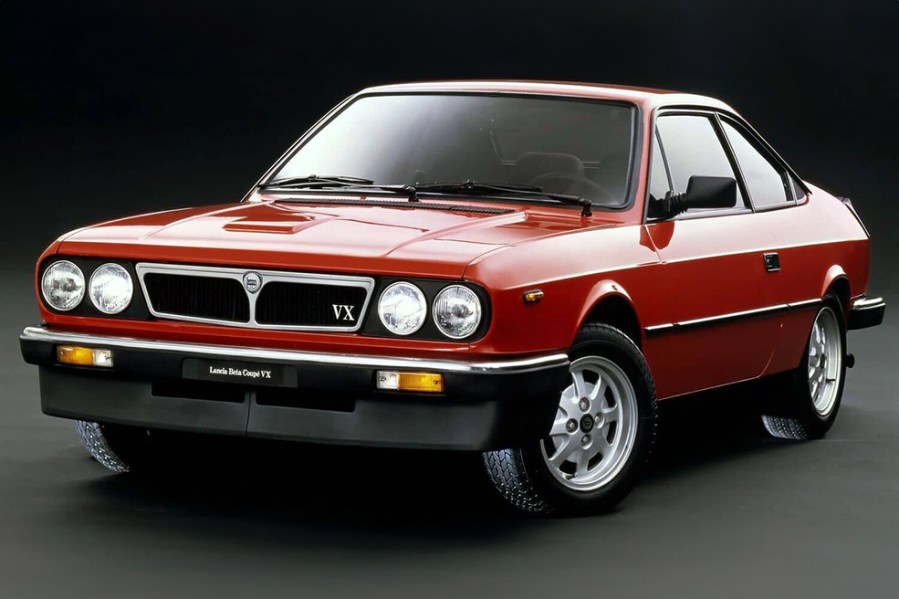
Volkswagen Polo G40
While Roots-type superchargers dominate here, the unique G-charger – or G-lader as it’s more properly known in its native land – was at the heart of an unlikely 1980s hot hatch. Indeed, the Mk2 VW Polo 1300 Coupe was rather innocuous until said supercharger was used to create the Polo G40.
The G-charger was unlike any previous supercharger design and took its name from the ‘G’ shape of its spiral innards. It had more in common with a Wankel rotary engine than a traditional supercharger and used a scroll-shaped spiral rotating inside a matching housing to compress the air. It was compact and efficient compared to Roots or screw-type superchargers, with a characteristic drone that’s often deemed as more a badge of honour than a drawback.
Revealed in 1987, the Mk2 Polo G40 produced 114bhp and was good for 0-60mph in 8.1 seconds, motoring on to a top speed of 121mph. It was produced in left-hand drive only, initially with a batch of 500. However, in 1991, shortly after the Polo range had been facelifted, the G40 became available as a right-hand drive full production model. It wasn’t much cheaper than a basic Golf GTI however, so sales were slow and only about 500 RHD cars were built.
In the UK, the G-charger was also offered on the 1.8-litre Corrado G60, which was launched in 1988 but not offered in right-hand drive until 1990. It was short-live though, being replaced by the six-pot VR6 model in 1992. The G-charger was also offered in left-hand drive variants of the Passat and of course the Golf – the latter including the G60 models and Golf Rallye.
Sadly, the charger demanded very tight tolerances to work, and that became a problem when the miles were piled on. The seals would start to leak air and loose boost, then the centre bearing developed of play and suddenly the scroll was in danger of hitting the casing at 10,000rpm with predictably disastrous results. A few too many warranty claims may well explain the fact that modern go-faster VWs and Audis are turbocharged, while the G-charger has been consigned to history. However, there are numerous specialists out there to rebuild them.
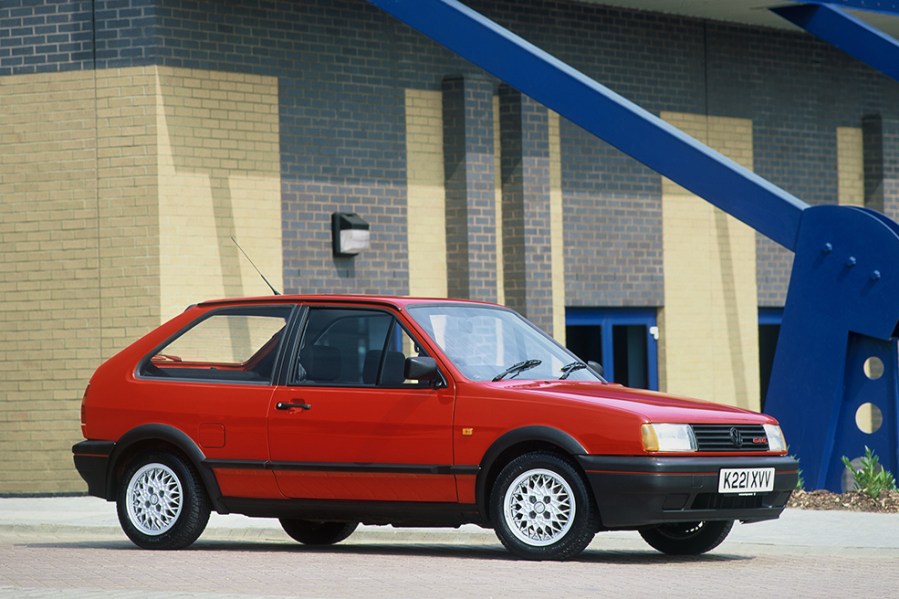
Aston Martin Vantage V550/V600
The Virage of 1989 continued Aston Martin’s lineage of long-legged GT brutes, with a muscular V8 and chunky styling offering a more charismatic alternative to the Mercedes SEC and BMW 8 Series. Come 1993, however, the Virage had more than looks and comfort to offer – the V8 Vantage V550, to give it the full title, immediately looked different. New flared wheel arches and lower suspension gave the Vantage a wider, more aggressive stance than the Virage, complemented by newer mirrors and four individual rear lights. Beneath the 18-inch wheels were 362mm (14-inch) brake discs, a record size for a production car, but it was the power they were holding back that’s of interest to us.
The 5.3-litre V12 now boasted not one, but two superchargers crammed into the engine bay. Accordingly, power shot up from 330bhp to 550bhp, while torque was a near identical 555 lb.ft. Despite weighing in at over 1950kg, the big Aston could get to 60mph in 4.6 seconds – on par with the Ferrari F40 – and top out at 186mph, phenomenal performance that saw this leather-lined GT car beat a Lamborghini Diablo in a drag race on Top Gear. Despite this turn of speed and world-beating power, however, the V550 kept its light hidden under a bushel – there’s just a single badge on each front wing to denote the supercharged spec and while you get a glorious V8 rumble that sounds almost like an old muscle car at low revs, you won’t find any whining from either supercharger.
Come 1996, customers had the option of returning their Vantage for the V600 upgrade, with even bigger brakes and an uprated cooling system, the latter allowing some engine tuning that alleviated 600bhp from the twin-supercharged V8 and making a 200mph top speed possible. Yet even in V600 guise, the Vantage still looks relatively subtle, the wheels and discreet badging the only hint that this supercharged beast could still floor most modern supercars.
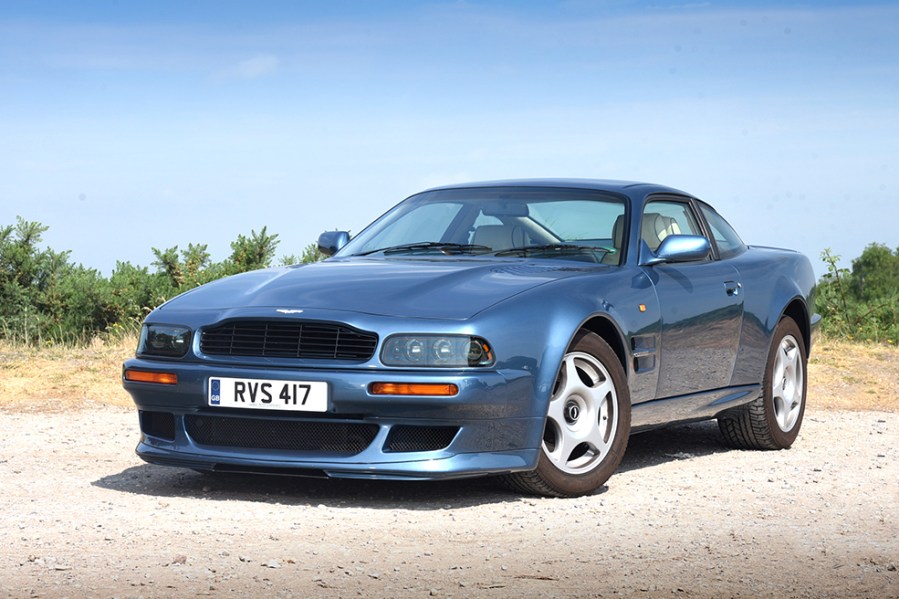
Jaguar XJR (X300)
If the Vantage was subtle, our next entry can still roll down the high street unnoticed, yet offers enough power to pin you in your seat. The X300 XJ was a landmark car for Jaguar, its return to the iconic classic look paired with refreshed interior and thoroughly updated production line to create a Jag saloon with quality, comfort and ability to rival the Germans. The engine was a gem too, the new AJ16 straight-six proving a smooth, powerful, economical unit, befitting of a Jaguar saloon. Even in 4.0-litre guise, however, it didn’t have the power to challenge larger V8s from BMW and Mercedes, but nor was the planned V12 the right powerplant for a sports saloon. The solution? A supercharger, fitted to the 4-litre engine in the XJR that, thanks to its intercooler, took power up from 246bhp to 321bhp. Get a good launch in the manual-equipped car, and the XJR could reach 60mph in a BMW M5-troubling 5.7 seconds, on the way to the same electronically limited 155mph top speed.
Whereas the XJ40 XJR had been a TWR-bodykitted, visually loud affair, the X300 XJR was far subtler – lovely five-spoke wheels reminiscent of those on the XJ220, a mesh grille with body-coloured surround, body-coloured boot-lid plinth and larger exhaust outlets were your only hints that you were looking at the fastest four-door Jaguar ever. Grippy Pirelli P-Zero tyres and 10mm lower, firmer suspension ensured tenacious grip and commendable handling given the XJR’s weight, size and luxurious cabin, while the supercharger itself continued the theme of subtle brutality, with torquey power delivery, but minimal whining noise unless you really booted it. The XJR had a classy air of menace that marked it apart from German rivals, while the supercharged straight-six was an engine configuration no other manufacturer offered.
Aston Martin DB7 3.2
The Aston Martin DB7 was the brand’s new entry-level GT car, positioned below the pricier Virage and aforementioned Vantage. The gorgeous Ian Callum-designed DB7 was something of a parts bin special to minimise costs and maximise profits, borrowing rear lights from the Mazda 323, door handles inside and out from the MX-5, switchgear from numerous Fords and the column stalks from the X300 Jaguar XJ, as well as the engine. Yep, the new baby Aston didn’t sport a V8, nor did a V12 feature until the Vantage of 1999, instead it used the 3.2-litre straight-six from Jaguar, as engineer Walter Hayes felt harking back to the six-cylinder lineage of the DB5 was important.
The smaller 3.2-litre AJ16 was chosen as a higher-revving, sportier engine. However, an Aston Martin costing over £80,000 could hardly provide just 215bhp, so an Eaton supercharger was fitted, running 40 percent more boost than the XJR 4.0 to boost power to 335bhp. Like the Vantage V550, the DB7 3.2’s supercharger was seen and not heard, with the subtlest of whines when revved, largely drowned out by the straight-six growl. Performance was strong on paper, with 60mph achieved in 5.6 seconds, but the four-speed GM automatic undeniably dulls progress, with a reluctant kickdown and slow shifts turning the DB7 into either a relaxed cruiser or underwhelming sports car, depending on your perspective. That said, the smooth powerplant relishes the supercharged boost, and we’ve even heard of down-at-heel DB7s being used as drift cars.
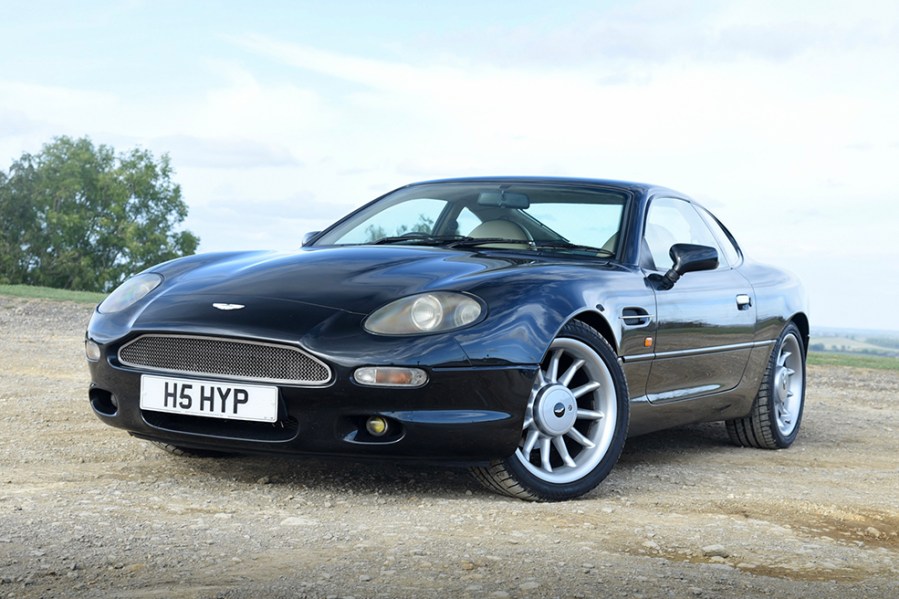
Mercedes SLK (R170)
The first Mercedes supercharger was developed as long ago as 1921 by a Daimler-Benz team with assistance from Ferdinand Porsche, with Mercedes becoming the first manufacturer to install superchargers on some of its production models, marketed as Kompressor. It has also been one of the most prolific exponents of supercharging in the modern age, with the original R170 SLK roadster elevated in terms of performance and reputation by the addition of a blower.
The SLK was launched in 1996 and was based on a shortened W202 C-Class platform. While its metal folding roof, termed ‘Vario-Roof’, was not a completely new concept, it began a craze in the segment during the 1990s and 2000s that would see a spate of copycats.
Initially, the only UK model was the 193bhp SLK230 Kompressor with automatic transmission, but a manual was made available in 1999. A facelift in 2000 added a 2.0-litre SLK200 model to the range, also supercharged, and there was the V6 SLK320 too, which didn’t have forced-induction. The big news, however, was the arrival of the SLK32 in 2001. This AMG-built halo model took the fight to the BMW Z3M by adding a twin-screw supercharger to the V6, making it good for 349bhp and a 0-60mph time of around five seconds, silencing anyone with doubts about the SLK’s sporting credentials. A total of 4333 were produced, of which 263 came to Britain – a tiny proportion of the 311,222 R170 SLKs built in total.
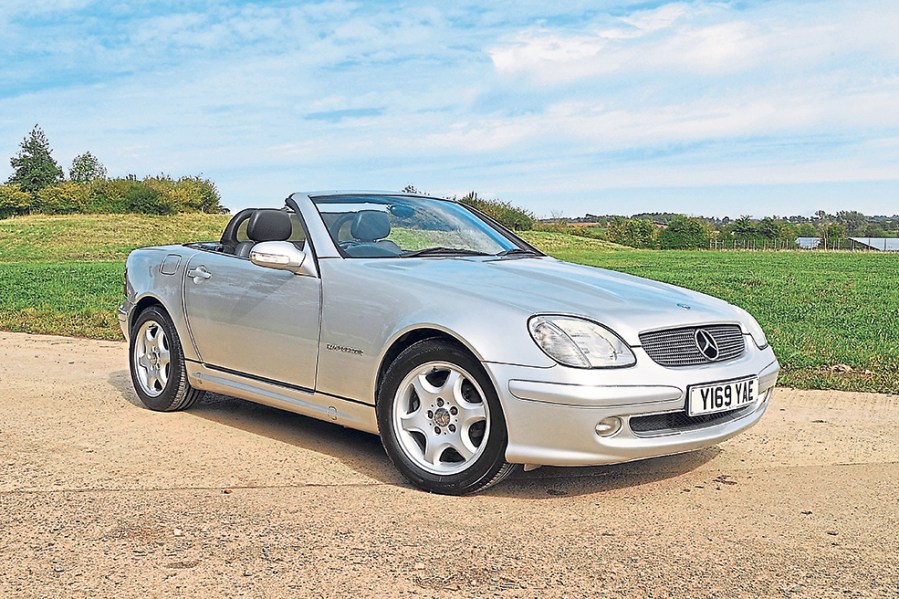
Jaguar XKR (X100)
The replacement to the XJ-S was long overdue by the mid-1990s, so Jaguar wanted its new XK8 to hit the ground running and make a strong first impression in the company of prestigious rivals like the Porsche 911, BMW M3 and Maserati Ghibli. The all-new AJV8 engine provided smooth, torquey power with a lovely V8 rumble, pairing with the XK8’s plush interior and smooth ride for an extremely capable GT car, but with 60mph arriving in seven seconds, the 290bhp 4.0-litre clearly had more potential in it. Accordingly, Jaguar fitted a sizeable Eaton supercharger and intercooler to the V8, boosting power to 370bhp and creating the XKR. Colour-coded bonnet vents, larger wheels and a subtle XKR badge were the only visual clues that this was more than a pub landlord’s Jag, until you put your foot down – the V8 rumble was accompanied by a strong whine and the 60mph sprint was down to 5.4 seconds, brisk enough to batter the M3 and 911 Carrera into submission, while maintaining the interior ambiance and floaty Jaguar ride.
Being launched alongside the naturally-aspirated XK8 meant the XKR didn’t have too much of a fanfare surrounding it, giving it something of a Q-car status when painted silver or black. If the 370bhp wasn’t enough, however, the AJV8 grew to 4.2-litres in 2002 and rose power of the XK8 to 300bhp, while the R was now a 400bhp beast. The signature supercharger whine remained and only boosted the low-down grunt of what was already a gem of an engine. Offering comparable performance to the 5.7-litre Corvette C5, the XKR was now considered a genuinely supercar-baiting machine, but remained a subtle GT that could still be daily driven. What’s more, various companies offer reduced supercharger pulleys that can boost power by as much as 40bhp, giving this near 25-year-old Jag performance to match the latest Porsches.
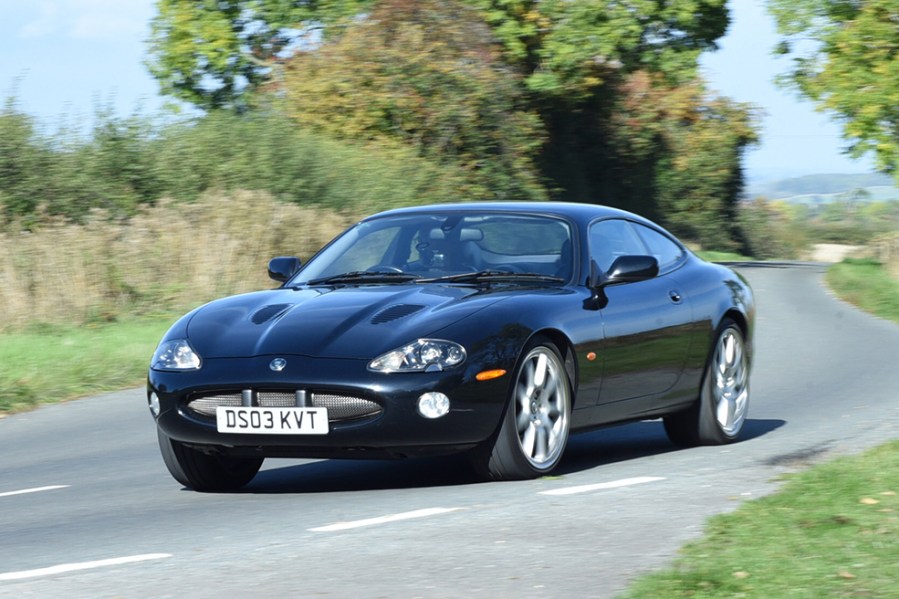
MINI Cooper S (R53)
When the R50 MINI was launched in 2001, it paid homage to the name’s heritage, with an interior an styling cutes inspired by the Issigonis original. The Cooper name made a return too, sitting above the 89bhp One with a 115bhp variant of the 1.6-litre Tritec engine – a unit also used in the Chrysler PT Cruiser, incidentally. The MINI’s sharp steering and excellent chassis made for a fun driving experience, but while the Cooper was decently brisk, it was clear the platform could take far more. History dictated that the model above the Cooper would be the Cooper S and indeed, in 2003, the model codenamed ‘R53’ arrived. Bigger wheels, chunkier bumpers – the rear housing a central exhaust – S badges on the front wing vents, a bigger rear spoiler and a bonnet scoop offered a sportier look, but it’s what was behind that scoop that we’re interested in.
The scoop fed cold air to an intercooler, connected to an Eaton M45 supercharger pushing 11.5psi of boost into the engine and raising power from 115bhp to 163bhp. As you’d expect, performance was significantly improved – 0-60mph came down two seconds from 9.2 to 7.2, while the top speed was now 136mph. The performance gains were welcome, with the MINI now a genuine hot hatchback contender that was fast, exciting and huge fun to drive, but the biggest change with the Cooper S was the noise. Of all the supercharged cars here, the R53 arguably shouts the loudest about it – an enthusiastic whine that dominates the engine note from near idle makes for a truly exciting, smile-inducing driving experience and like the XKR, smaller pulleys are available these days to extract more noise from the blower and take power north of 210bhp. We defy anyone to drive a healthy MINI Cooper S enthusiastically and not come away smiling.
